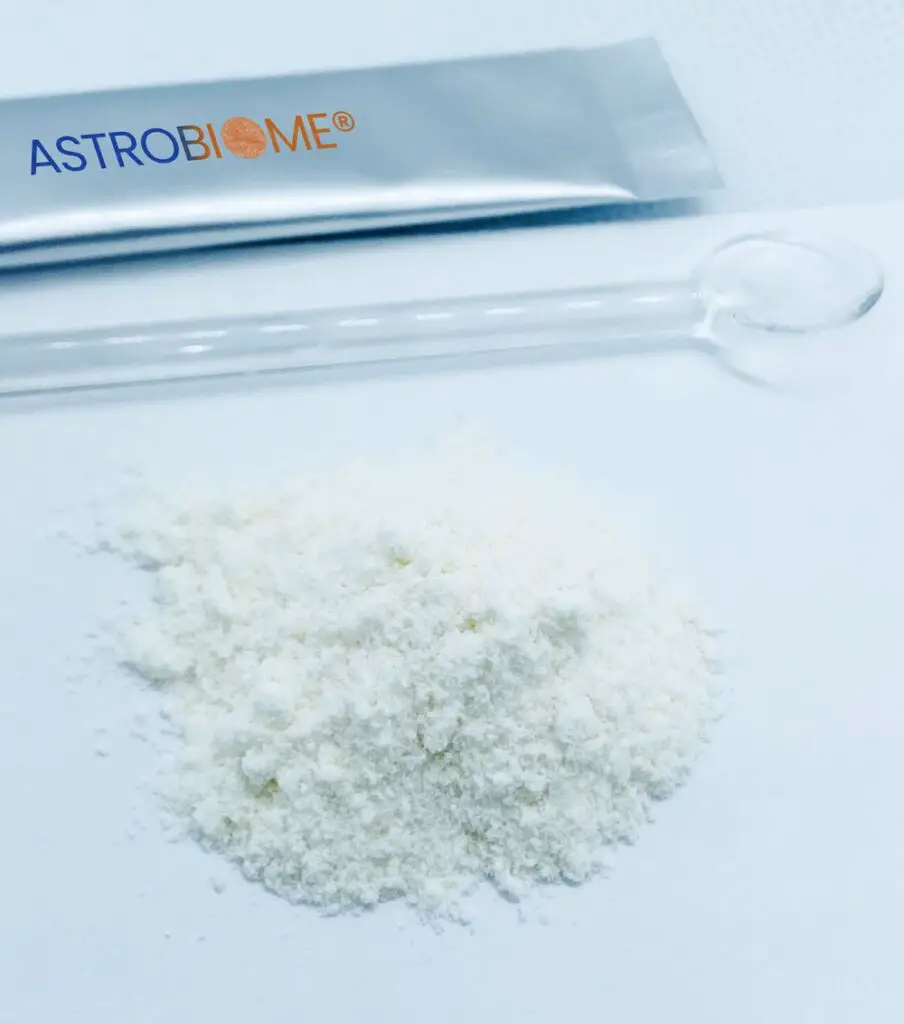Understanding metabolism is essential for understanding the phenotypic behavior of all living things, including people. Metabolism is essential for health and appropriate functioning in all living things. Metabolites are the byproducts of metabolic processes that are catalyzed by numerous enzymes found in cells. While it is frequently used to describe larger entities, this phrase is mostly used to describe tiny molecules. The cell produces primary metabolites because they are necessary for cellular proliferation. Amino acids, alcohols, vitamins (B2 and B12), polyols, organic acids, and nucleotides (such as inosine-5′-monophosphate and guanosine-5′-monophosphate) are notable examples. Compounds that an organism produces known as secondary metabolites provide vital ecological and other roles but are not necessary for main metabolic activities. These consist of medications, flavorings, scents, dyes, pigments, insecticides, and food additives having uses in pharmacology, industry, and agriculture.

Human Metabolites
Arachidonic acid is a metabolite of prostaglandin, and the two compounds have many of the same functional groups, physical characteristics, and formulae. Also, a predetermined chain of enzyme-catalyzed reactions that follow a rational sequence of chemical change connects the two molecules. Inosine-5′-monophosphate is a metabolite that develops from the one-way condensing of two or more intermediates, namely glutamine and phosphoribosyl-pyrophosphate, according to the free energy exchange theory. By making only minor modifications to the cholesterol ring’s superstructure, steroid hormones can be produced that differ biochemically from the cholesterol source molecule. Tyrosine is the starting point for an irreversible route that leads to catecholamines (such as norepinephrine or dopamine). In addition, all precursors of catecholamine must pass via a tyrosine intermediate due to biochemical principles. Small molecules are difficult to define precisely because they quickly diverge from their parent structure. A metabolite may also be a component of a bigger structure or a degraded good that has to be disposed of. The study of a given organism’s metabolome, or collection of metabolites, is known as metabolomics. Studies on gene expression and proteomics can benefit from it. A publicly available electronic database including comprehensive data on small molecule metabolites discovered in the human body is known as the Human Metabolome Database (HMDB). ‘
Microbial Metabolites
The chemistry found in microbial metabolites is remarkably varied. The chemical variety present in the tens of thousands of metabolites produced by microbes continues to be an unrivaled source for the identification of new microbial chemicals that may have benefits in human health. It might be difficult to tell the difference between a microorganism’s main and secondary metabolites. They frequently create a complicated combination of mimics instead of simply one member of a class of metabolites (i.e. metabolites with closely related chemical structures). In their native settings, makers of microbial secondary metabolites are assumed to have an advantage over rival species due to reduced growth of competing species, more effective foraging, or other processes. Alcohol is one of the key metabolites used most frequently in industrial microbiology for large-scale manufacturing. This metabolite is employed in fermentation-based procedures that produce beverages like beer and wine. One of the most often used substances in food manufacturing is citric acid, which is generated by Aspergillus niger. Citric acid is also employed in the pharmaceutical and cosmetic sectors. Leptomycin, bafilomycin, geldanamycin, herbimycin, tautomycin, and other antimicrobial metabolites have all established significant roles as bioprobes in cell biology. Atropine and antibiotics like erythromycin and bacitracin are examples of secondary metabolites having significance for human health. A secondary metabolite called atropine that is significant in medicine is generated from a variety of plants.
Connecting Proteins to Glucose Metabolism (Metabolic Pathways)
It is best to think of metabolic pathways as porous channels via which things can enter and intermediates can exit. These routes are open networks. There are several reactants in various routes that are substrates, intermediates, and products in a certain pathway. A good example of this phenomena is proteins. They can be disassembled into their individual amino acids and utilized at different points in the glucose catabolism process. In cells, a wide range of enzymes hydrolyze proteins. The majority of the time, amino acids are recycled to create new proteins or are utilized as building blocks to create other critical biological components like hormones, nucleotides, or neurotransmitters.
Nonetheless, some amino acids will be diverted into the pathways of glucose catabolism if there are too many amino acids or if the body is starving. Before the carbon chain enters these routes, each amino acid must have its amino group removed (deamination). The urea cycle transforms an amino acid into ammonia when the amino group is taken off of it. The amino acid’s remaining atoms form a keto acid, which is a carbon chain with a ketone and a carboxylic acid group. The liver of animals produces urea by combining two ammonia molecules with one carbon dioxide molecule. As a result, the main waste product in mammals made from nitrogen that originates in amino acids is urea, which exits the body through urine. The citric acid cycle can then be entered by the keto acid. Amino acids can enter the routes of glucose metabolism as pyruvate, acetyl CoA, or a number of citric acid cycle components when they are deaminated. For instance, deaminated asparagine and aspartate are transformed into oxaloacetate and enter the citric acid cycle’s catabolism of glucose. Before entering the pathways, deaminated amino acids can potentially be changed into another intermediate molecule. Many amino acids can enter the metabolism of glucose in various places.
Microbiome Therapy
In fact, the microbiome is frequently referred to as a “drug factory” since it generates so many distinct chemicals that affect the body physiologically. There are currently potential commercial medicines as a result of research on these microbiome-produced compounds. Based on metabolites obtained from the microbiome, medications are now being developed to treat malignancies, obesity, diabetes, Crohn’s and ulcerative colitis, lactose intolerance, tooth decay, urinary tract infections, celiac disease, many skin disorders, and acne. The impact of antibiotics on the microbiome is the focus of World Microbiome Day in 2019. Antibiotics kill out a lot of good bacteria in humans and animals in addition to the “bad” bacteria that are causing the infection that is being treated, resulting in microbiome imbalances that can cause digestive problems including persistent diarrhea, constipation, and vomiting. Finding good antibiotic substitutes will help us reduce our reliance on these potent medications, which will lower the danger of harm to the microbiome and the emergence of antibiotic-resistant bacteria. The solution, according to researchers, rests in more precisely targeted treatments like fecal microbiota transplants and bacteriophages (miniature viruses that target specific bacteria) (FMT). In other words, the gut microbiota holds the key to the solution.
Astrobiome: What You Need to Know
Their special formula was developed to sustain astronauts and is also useful for workers working in high-stress environments and high-performance sports. The world’s most cutting-edge microbiome technology, developed by a Japanese laboratory, Innovation Labo and exclusively distributed by Mars City Design,LLC. Recent studies have also demonstrated how the long-term use of Astrobiome as a mitochondria therapy can significantly alter our way of life and lead to generational health improvements, including: Promoting mitochondrial epigenetic shift repair, regulating our circadian rhythm, removing toxins and dead cells to regenerate healthier new ones, and enhancing gut-brain axis.
Their postbiotic is a full-spectrum metabolite complex, a blend of hundreds of metabolites obtained from naturally cultured beneficial gastrointestinal microflora, unlike the probiotics we find in cheese (and other foods) which include common living bacteria. When we ingest regular probiotics, these live strains are unstable and can even be harmful for those who have had past disorders affecting their gut health, depending on the quality of our food and how the probiotics are maintained. The direct metabolites needed by our mitochondria to repair healthy cells would be missed if you take probiotics. This indicates that it provides our body and energy in general with more immediate and effective advantages. Because these super-metabolites have already been stabilized, we may mix them with any food or drink to get the best benefits.
While other nutritional supplements in the market often exist as individual vitamins, costing from $19.00 to $2500.00 each, their’s are already a full spectrum metabolite complex, working in concert to preserve the essential rhythms of the body.The presence of their hundreds of natural metabolites is detected to highly nourish the most essential pathways in the body that are key to our crucial health and aging processes. These Astrobiome® metabolites can regulate disrupted auto-immune responses, so as to significantly reduce inflammation and regenerate the production of young and healthy cells, in other words, enabling the most efficient and potent, the world’s first microbiome therapy.
Astrobiome: A full Spectrum of Metabolite complex.

This Super Postbiotic Complex over-the-counter supplement is made in Japan. Each stick includes 1 gm of a complex and patented mixture of fermented lactic acid bacteria metabolites. Use 1-2 sticks each day, combined with a glass of water, for the best results. It is best to take this medication in the morning or right before bed.
AstroBiome: Biostimulant For Plants

Each plant has a microbial ecology with a balance of specific symbiotic dynamics, just like people. This microbiota can be disturbed by the application of any chemical fertilizers or soil management practices. In order to improve plant resiliency, stability, and nutritional content, AlphaBiota-J88 in the form of a gel and AlphaBiota-R in the form of a grain were developed. These products offer a clever solution for vertical farming as well as outdoor farming in unfavorable soil conditions. These organic and natural methods increase soil fertility, decrease pests and illnesses, increase crop yields, and enhance the nutritional content of foods cultivated both indoors and outdoors. As a consequence, the plants will produce larger veggies without the need for artificial fertilizers, consume less water to hasten harvest, and produce food of higher quality overall at a reduced cost.
A Deeper Connection
The connection between the gut microbiota, the brain, and neurologic-associated diseases has drawn more attention in recent years. It goes without saying that gut microbiota plays a significant role in neurogenesis, mental and cognitive development, emotions and behaviors, and the progression of neuropsychiatric illnesses because numerous preclinical and clinical research studies demonstrate gut microbiota’s potential to modulate the general state of health state. The development and occurrence of neurological and psychiatric disorders like depression, anxiety, bipolar disorder, autism, schizophrenia, Parkinson’s disease, Alzheimer’s disease, dementia, multiple sclerosis, and epilepsy are directly correlated with the production of significant biologic products by the gut microbiota through the gut-brain axis. Your gut is a very intricate system that does much more for you than just aid in food digestion. The billions of bacteria, viruses, and fungus that make up your gut microbiota reside there. The enteric nervous system, a complete nervous system, also exists in the gut (ENS). Since these components interact, our stomach and brain are very linked and constantly communicating. There’s a reason why the expressions “go with your gut” and “I’ve got a gut feeling” are popular: the stomach is sometimes referred to be “the second brain.” The neurological system in our stomachs evolved millions of years before the nervous system in our brains, which explains why the gut is such an important part of our general health.The greatest component of our immunological and hormonal systems, the stomach controls a vast array of bodily processes. According to research, gut health and mental health are related. Neurotransmitters like serotonin, which are produced in the stomach and have an impact on mood and behavior. Mental health issues including anxiety and sadness have been related to imbalances in the gut flora. The stomach also creates chemicals like cortisol that affect stress levels.




